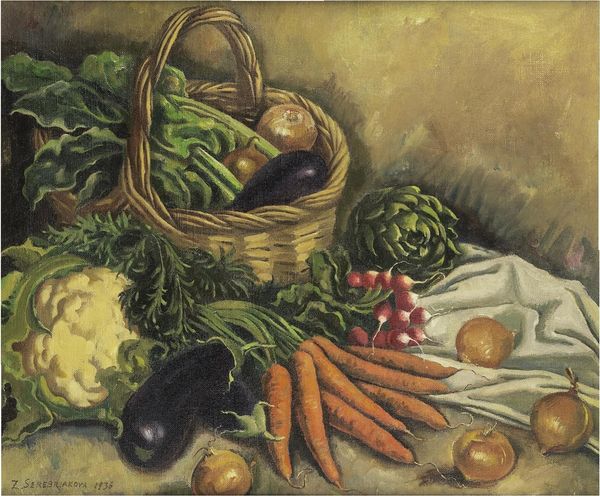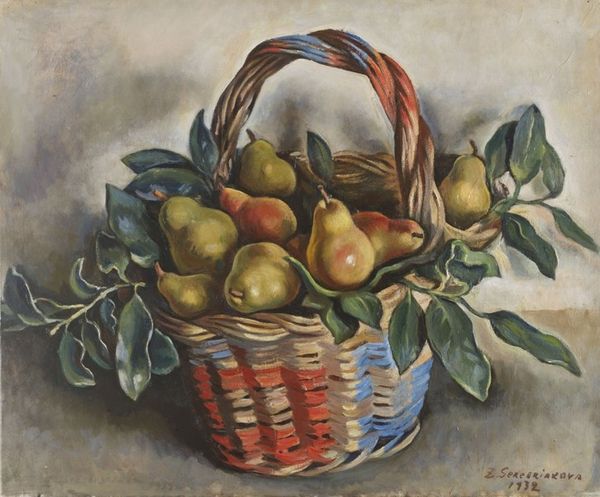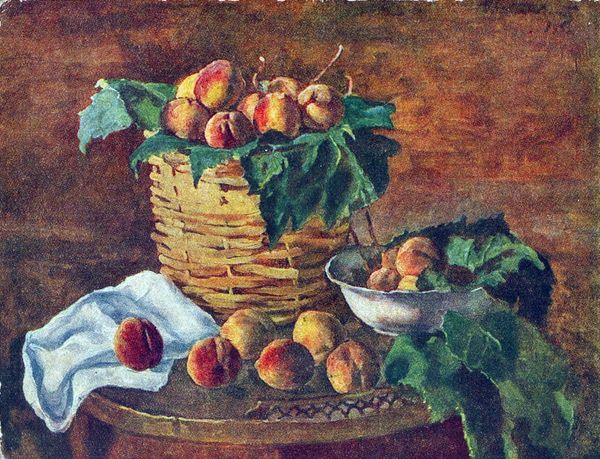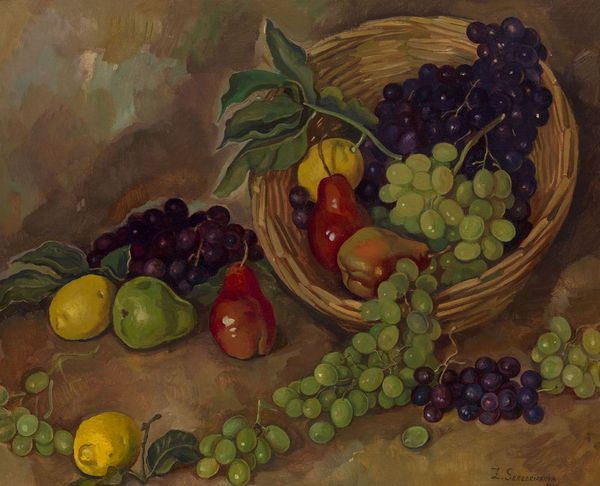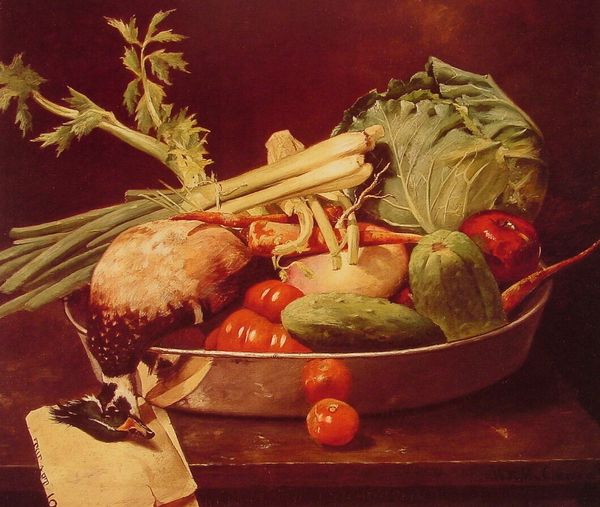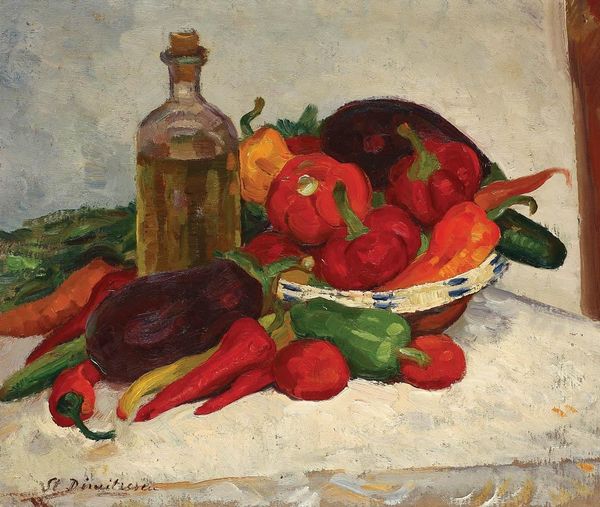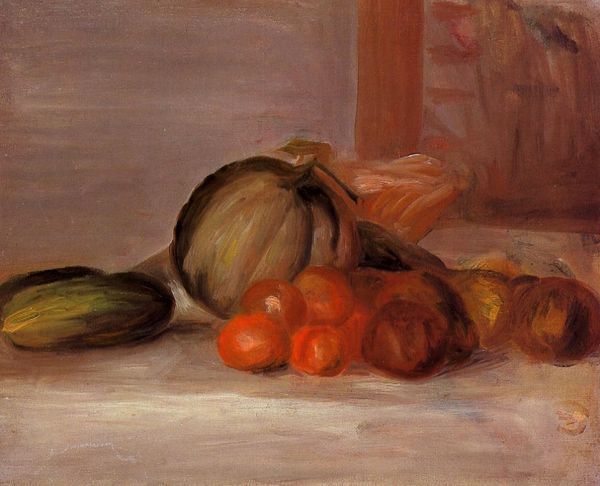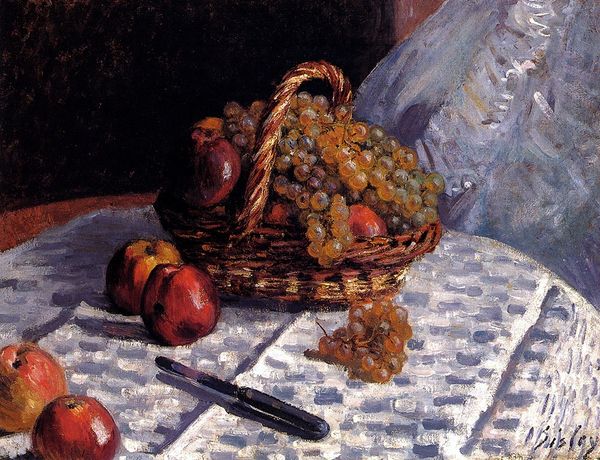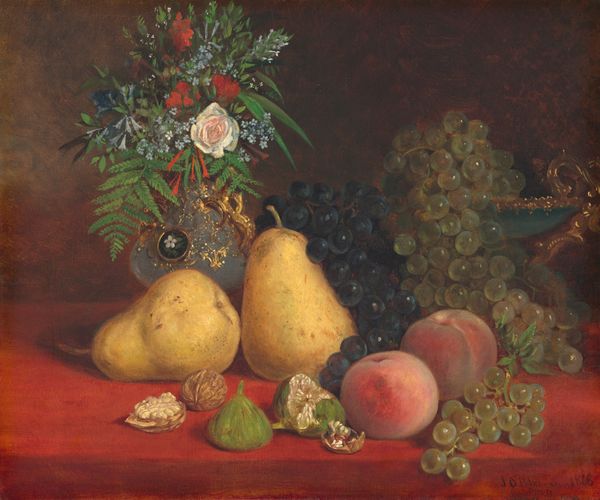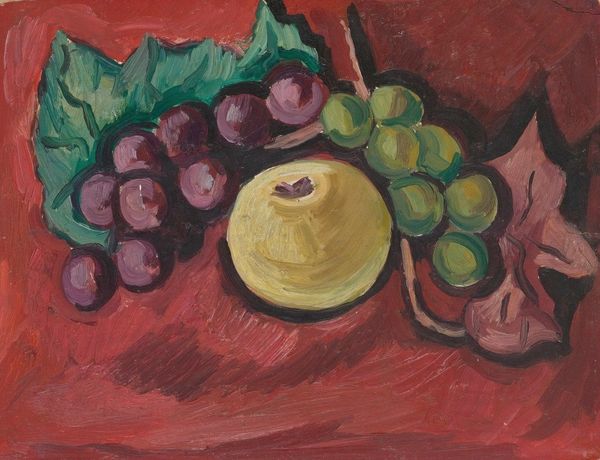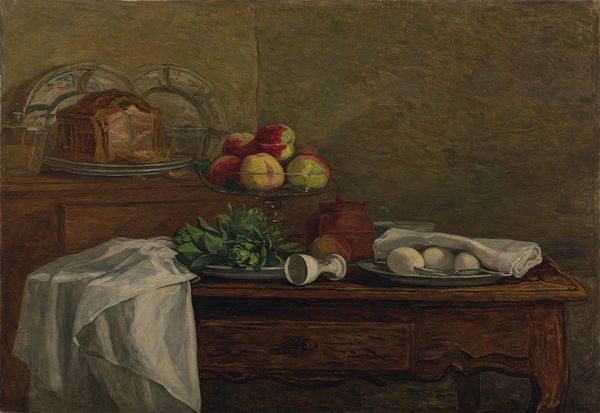
oil-paint, photography
#
still-life
#
oil-paint
#
landscape
#
photography
#
oil painting
#
fruit
#
coloured pencil
#
realism
Copyright: Zinaida Serebriakova,Fair Use
Curator: Welcome. Here we have Zinaida Serebriakova's "Still Life with Vegetables," created in 1936 using oil paint. Editor: My immediate impression is abundance. The arrangement within the basket, overflowing even, and the colours…rich earth tones. There is something very grounded and nourishing here. Curator: Indeed. Beyond just depicting produce, the basket itself speaks to cultivation and harvest—the gathering of the land’s resources. This evokes considerations around labour, sustenance, and access during a politically fraught period in Europe. How were these materials sourced? What communities did Serebriakova engage with in procuring the produce and crafting this depiction? Editor: That's a good point, but looking more closely, I also see more subtle visual cues. The way the artist handles the artichoke, for example, that spiky, almost defensive form placed centrally… and the beets tumbling out, roots exposed, giving me a symbolic message about our deep relationship with the soil and with nature’s offerings, a shared feast between humanity and nature. Curator: I agree; however, consider how Serebriakova uses oil paint—the very act of layering colours to create texture. Look at how this mirrors agricultural layering in the cultivation of land. Furthermore, basket-making in the region was itself a socio-economically significant trade, the techniques passed down through families... what if Serebriakova sought to elevate so-called ‘low’ or ‘folk’ forms of artistic creation? Editor: Interesting... though it feels less about elevating craft and more about highlighting timeless connections. The vegetables aren’t just food; they are potent symbols: earth, fertility, life. Consider how often artists return to these elemental themes during times of societal upheaval, suggesting a desire to reconnect with fundamentals. Curator: True, such recurring symbolic images do provide that connection. But acknowledging material conditions offers more nuance about why Serebriakova may have chosen this precise basket, these vegetables. What was the social, economic purpose of these items in daily Russian and European life at the time of its making? Editor: Ultimately, both readings enrich the experience. Recognising cultural symbols provides insight to timeless human connections, and awareness of the resources adds complexity and nuance, and encourages dialogue. Curator: Exactly, considering material reality allows the visual symbols to resonate even further. A conversation well-fed, I'd say!
Comments
No comments
Be the first to comment and join the conversation on the ultimate creative platform.
